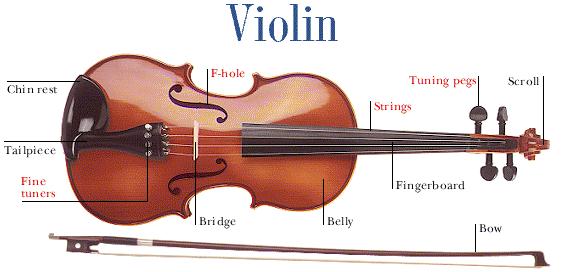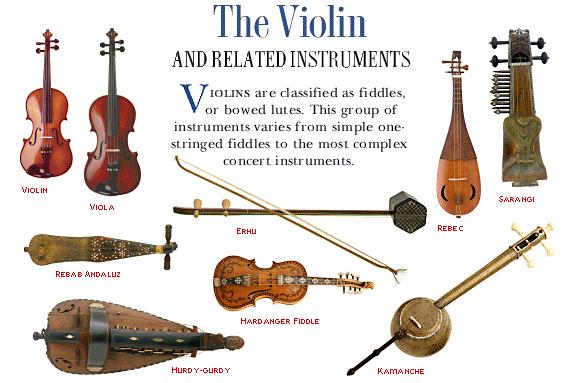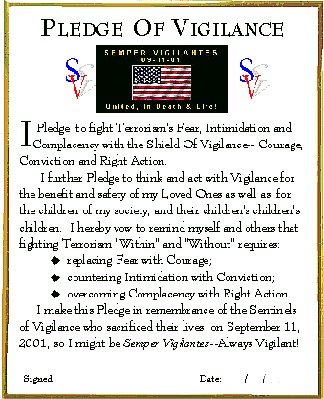| Sweet Strings of
Vigilance--Violence and Terrorism can be lulled into peace and
tranquility. A group of former Russian musicians play with
Vigilance. Their average age--25. They quell the
Beast of Terror's thirst to kill and maim. They honor all who
have died at the hands of Terrorism, and play for the hope of
Vigilance in the future. |
 VigilanceVoice
VigilanceVoice

VigilanceVoice.com
Wednesday--October 30, 2002—Ground
Zero Plus 413
___________________________________________________________
Sweet Strings Of Vigilance
___________________________________________________________
by
Cliff McKenzie
Editor, New York City Combat Correspondent News
GROUND ZERO, New York
City, October 30 --I took a respite from Terrorism hunting last night.
My wife and I went to Carnegie Hall and listened to the Sweet Strings of
Vigilance.
There's something about violin music that
soothes the Beast Within, calms its, defangs it. In Mary Shelley's
famous novel, Frankenstein, the Beast is calmed by soothing sweet notes of
Vigilance, lulling the "monster" so it can be captured.
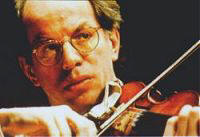 |
|
Gidon Kremer |
I felt that way last night
as my wife and I sat in the nosebleed section of Carnegie Hall's
beautifully designed concert hall and listened to Gidon Kremer, hailed as
the world's finest living violinist, lead the Kremerata Baltica string
orchestra. My wife won the tickets in a drawing.
The concert was titled "In Memoriam,"
a timely theme to pay respect for more than a hundred Russian citizens who
died in the recent foiled Chechen Terrorist attack on one of Moscow's
great concert halls. The Terrorists held 750 theater-goers
captive, threatening to blow them up, until the Russian government used a
knock out gas to subdue them. The gas, unfortunately, killed
117 of the hostages.

|
Kremer's notes were filled with emotions, rising
and falling, carrying one through the existential Angst that Karl Amadeus
Hartman was noted for when he composed concerto funebre, the first
of three presentations. The other two were from Gustav Mahler and
Franz Schubert.
I found it interesting that I
embraced the sounds of the violins, violas and cellos that captured
something within me and swept me into the many facets of sounds ebbing and
flooding from the main stage. We had center seats that looked
down at the performers. I felt like an eagle flying above the
thirteen men and thirteen women who comprise the Kremerata Baltica.
I also had mixed thoughts. As I
listened to the music, my mind flashed to the Russian Cultural Center and
the hundreds of people who came that evening to enjoy a new musical.
I felt creepy thinking that at any minute a group of Terrorists might
storm the stage and take over Carnegie Hall. Prior to
September 11, I might never have let such a thought pluck at my mind.
But as we climbed up and up to our "near-the-ceiling" seats, I became
aware how hard it would be to exit the hall if some tragedy happened--a
fire, for example, or a sudden take-over by bomb wielding Terrorists.
These days, anything is possible.
But as the music danced from the fingers
and hands of the ensemble, and the strings of their fine instruments sang
their emotional cries of joy and mourning, I was mesmerized. The
Fear, Intimidation and Complacency of Terroristic thoughts were driven,
banished, cordoned by the sweet sounds of Vigilance.
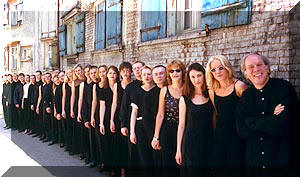 |
|
Kremerata Baltica |
Kremerata Baltica is
comprised of young men and women from the Baltic States--Estonia,
Lithuania and Latvia. Their average age is 25, according to the
information supplied in the Carnegie Hall Playbill we were given upon
entering. Each musician was hand selected by Kremer, who, in his
mid-fifties, has elected to become a Sentinel of Musical Vigilance,
collecting around him the most gifted young players and passing on his
wisdoms, learning and experience to them.
Music is history. Karl Amadeus
Hartman wrote his concerto funebre in 1939 in retaliation to the
Munich Agreement that allowed Hitler to invade Czechoslovakia and take
over the Sudetenland without a struggle. In different movements he
expresses a range of emotions, from a funeral march to defiant rhythmic
and dynamic forces, suggesting the "will of the people" was stronger than
Hitler's domination. In the closing chorale he uses music to quotes
a Russian revolutionary workers' hymn of 1904--another underscore of
defiance against the Nazi Terrorism that prevailed.
Composers like Hartman stood up to Terrorism
through music. Every note had a meaning, a message to the
audience that Courage would overpower Fear, that Conviction must stand
against Intimidation, and that Complacency--inaction--must be countered
with Right Action.
By composing the piece, Hartman took the risk of
being a subversive. His overture music explicitly evokes the
Czech nationalism that Hitler sought to trample, offering those who
listened to it a surreptitious message of Vigilance in the face of ruling
Nazi Terrorism.
As I was listening to the music, I didn't know
the history of the composition. This morning I read it
thoroughly. It was nice to not have prior knowledge of the piece,
for my emotions were unexpectedly engaged. I felt the Passion of Hartman's
Vigilance without cluttering it with intellectualism.
Gustav Mahler's Adagio from Symphony No. 10 was
just as moving as the first piece. It was written in torment.
Mahler's wife was going to leave him, and he pleaded with her not to.
He said, if she did, "I would simply have gone out like a torch deprived
of air." It too was pained with passion of loss, and hope for
resurrection.
But the real mastery of the evening was the
solo playing of Gidon Kremer. His lyrical love for the violin
was incredibly majestic. He attacked it with wild passion and
celestial grace. His fervor caused me to want to know more
about the history of the violin.
Its roots go back to the lyre, the Greek
cithara and the Persian and Arabic Kithara. The first
reference to what we consider the modern violin came in 1523 from an
Italian town of Vercelli. What caught my attention was the
description of the violin as a "spiritual" instrument. Karen
Eastburn of Emory University describes it best: "Its curves
and complexities resemble the shapes of angels and saints in Baroque
sculptures. Baroque art was created by passionate, exultant artists
who believed in God and the glory of the church. The violin too was
invented was invented by artists who were passionate, exultant and devoted
to beliefs."
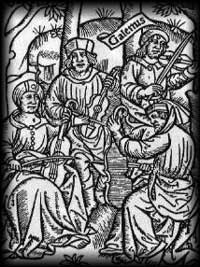 |
|
Precursors of the
Violin |
When I read that, I thought
about the feelings I experienced last night. Sitting high
above the stage at Carnegie Hall, I was able to feel the sense of being
lifted up out of my seat, and my soul softly sailing free form the Terror
of gravity. (I'm 270 pounds, six feet four inches tall, so any
gravity defying feeling is fine with me.)
As I shut my eyes last night, I had
this feeling the Sentinels of Vigilance were there, diving in and out of
the empty space formed by the curvature of the hall's Parthenian-shaped
dome. There was a sense of calm in the hall as the young musicians
played next to the master, a kind of reverence not only for him, but also
for their music and their instruments.
Angels of Vigilance, I thought.
The sweet sounds of the Angels of Vigilance speaking to all those Spirits
of Vigilance who had passed on, calling them back, to listen, to enjoy the
eternal message that Courage must never bow to Fear, that Conviction must
not suffer the power of Intimidation, and that Right Action will always
trumpet over Complacency when people come together as one, in an orchestra
of purpose.
I kept admiring the
young people below me. They were the Children of Vigilance,
playing to the Sentinels of Vigilance. They were letting all the
souls hovering above the World Trade Center know that they were embracing
anti-Terrorism weapons--violins, cellos violas--that only worked when
united as one body, expressing the Passion of Vigilance in a world riddled
by threats and acts of Terrorism.
I wondered if the youthful musicians knew they
were anti-Terrorist fighters. I wondered if they realized the music
they played unified all who listened with a passion for life and
prosperity that dwarfed all the vile and corrupt intentions of a
Terrorist.
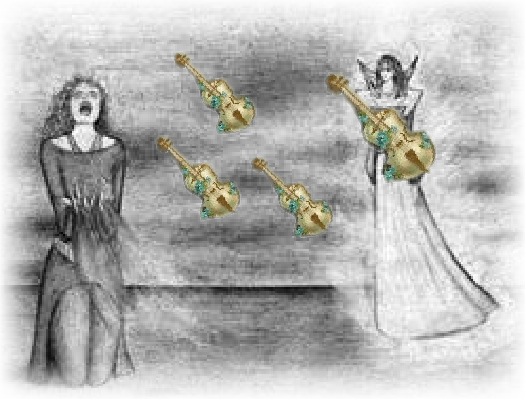 |
I hoped they did.
For to me, they were holding under
their chins and between their knees, the Shields of Vigilance,
and playing to the hopes of the Vigilant future.
They were, indeed, the Sweet
Strings of Vigilance.

Oct.
29--Political Terrorism In Our Children's Living Rooms
©2001
- 2004, VigilanceVoice.com, All rights reserved - a
((HYYPE))
design
|
|


